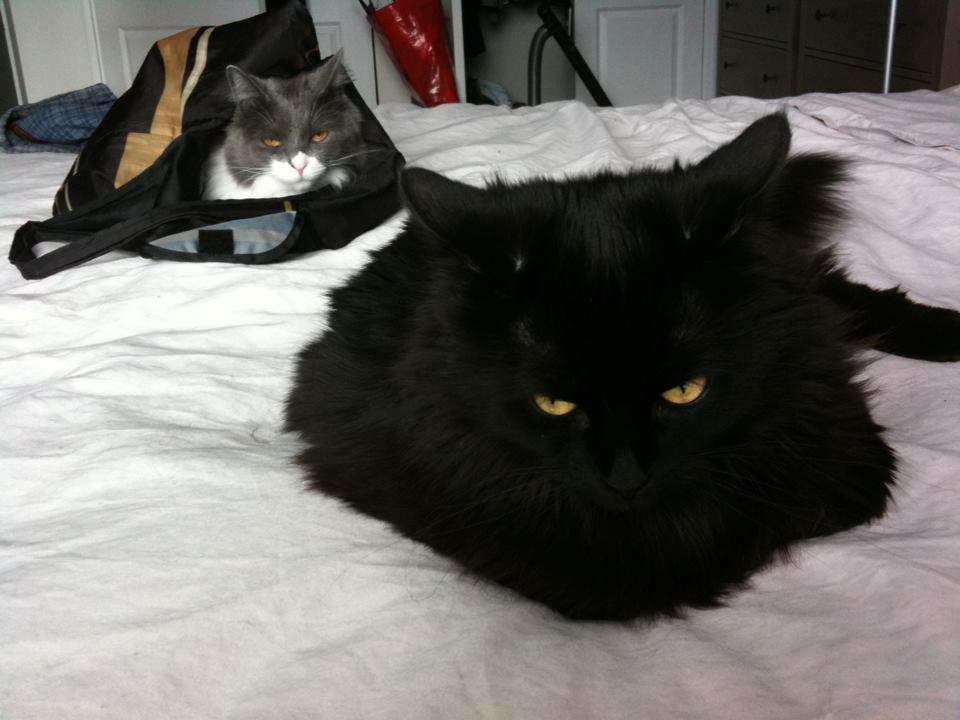By Sharon Naipaul
6 minute read
In my work, I offer many different services. They may not appear to be connected on the surface, but they are all interconnected in ways that make sense to me. In this series of blog posts, I wanted to talk about all the different things that I do, and their connecting threads, and explain why I do them.
The first and core service that I offer is mediation. It underpins everything I do. Why do I do it? Let me start with a little bit of history and how I developed my mediation style first:
How I Got Started in Mediation
Don’t laugh but I started mediating as a kid. I don’t know how it happened exactly, but I was the designated conflict resolution expert in my family. With four kids and parents new to the country, raising kids in a completely different culture from their own, there was never a shortage of conflict. As early as eight years old, I somehow knew it was my job to broker peace, and surprisingly I usually did. I think this was a sign that mediation was my true calling, but I got distracted by all the advocacy I did for my sister. She was somehow always in trouble with my parents. When I would try to explain to them why they were being unfair to her I always got the, “what do you think, that you’re her lawyer or something?”
I did end up going to law school and wouldn’t change that decision for the world, but even there, I kept hearing the siren call of mediation. Once I started in my labour, employment and human rights legal practice, it turned out that I loved litigating. I really did. But I found that I loved opportunities to discuss settlement with opposing counsel even more, and that I really enjoyed the collaborative spirit that could arise between counsel and the mediator as we all worked towards solutions in the best interests of our clients. Within a few years, and at the encouragement of a wonderful arbitrator I did some cases with (thank you Marilyn Silverman!), I threw my hat into the ring for a Mediator position at the Ontario Labour Relations Board, and the rest is history.

How My Mediation Style Developed
I consider myself incredibly lucky to have had the chance to mediate as an employee. Not having to worry about how to generate income as a new mediator meant I could fully focus on the work I was doing.
I was also fortunate to be able to work on a wide variety of case types including Employment Standards Act disputes, unfair labour practices, collective bargaining impasses, grievances, union certifications and so much more. That broad scope taught me how to tailor my processes and to apply a lot of flexibility in my approach for all of my cases.
I received some excellent training on the procedural aspects of mediation from my soon-to-be-retired mentor, and then I was on my own.
Without specific training in any particular type of mediation, I leaned heavily on evaluative mediation at the beginning (although I didn’t know that was what it was called at the time). This probably made sense as I was litigating right before I started mediating and was deeply steeped in the law and how that would impact the outcome of the case. My questions to the parties were geared toward discovering the relevant facts that would help me to assess the ways a case might be decided, which I would share with the parties as a means of helping them achieve settlement.
As time went on, I found that I started incorporating other factors into my mediations. I wasn’t only looking at what the potential legal outcome would be, but I looked at what the underlying issues were that brought the parties to the table in the first place. I read parties pleadings extremely carefully to see if I could get some insights into the needs and wants of the parties. I gave parties time to tell me their story where I tried to further tease out what was going on underneath the ostensible legal dispute. Later, as I went on to complete my Executive Certificate in Conflict Management, I understood that in doing this, I was taking an interest-based or facilitative approach to mediation.
The development of my mediation approach didn’t end there. What I also started to notice, particularly in cases like unfair labour practices, collective bargaining issues, and Public Service Labour Relations Act cases is that the seeds of future conflict were often latent, even after resolving the presenting legal issue between the parties. Either the parties would have to work together in the future, but were struggling to work together productively in the present, or there was an existing relationship (between a union and employer for example) that had broken down.
What I started to do in these cases is look for what I called “golden nuggets” or positive things the parties said about each other when the other party wasn’t there. These statements always had a lot of impact because, without the other party there, there was no reason to make these statements unless they were genuine.
After we had solved the legal dispute, I would ask the parties to stay behind for a while longer, and highlight that there appeared to be a larger, more fundamental relationship problem, and would ask if I could work with them to see if we could improve it. In these sessions I would keep the parties together so they could hear directly from each other. I would facilitate with open-ended questions so that each party could hear what the other was saying. One side might say, “it’s obvious (the other party) thinks I’m incompetent at my job.” If I had heard the other party say something quite different while in caucus with me, I would invite the other party to share what they said. They might have said, for example, that they really admired the way the other party was handling a difficult situation and that they were going a great job in the circumstances. When these types of exchanges took place, you could feel the tension melt from the room, and often at this point, the parties would start having really productive discussions about how to work through conflict in a more positive way going forward.
Some years later, when I took formal Transformative Mediation training, I realized that this was what I had been essentially been practicing all along. Many of you will know that Transformative Mediation is focused on two things. The first is empowering the parties, which is to say, to give them a sense of their own value and strength and capacity to handle their conflicts. The second is on recognition, which means helping parties see their “adversaries” as humans with their own legitimate situations and concerns. I have found this to be a highly effective and truly transformative form of mediation that works for complex internal institutional disputes as I described above, for interpersonal disputes in the workplace, and in community mediations among many other types of disputes.
With any mediation that I do, I can use one, some or all of these mediation styles. I love having the flexibility to approach conflict in a myriad of ways.

So now that you understand how I mediate, why do I do it? Because I love it.
Below are a couple of the reasons why.
The Advantages of Mediation
Conflict is Transformative
There are three things I firmly believe:
- That conflict is inevitable, natural and normal
- Conflict can be healthy
- Conflict can not only be resolved but it provides an opportunity for transformation
I often say to my clients, “if someone tells you they know how to get rid of conflict in the workplace, they’re selling you snake oil.” It’s just not possible to get rid of conflict, nor do I think that should be the goal. I believe conflict is completely normal, natural and inevitable. Often, it’s fear of conflict that drives us. When we avoid it, it often gets worse, which then increases our fear of conflict more and so it goes in an unending cycle.
Conflict is healthy. It means we are all our own individual people. Even when conflict arises, not from mundane causes such as disagreements over how work should be done, but because of a “bad actor” in the workplace, there is still an opportunity for a mediated resolution. Working through the conflict can help someone process the difficult feelings and impacts someone else’s actions had on them, and can help the “bad actor” understand the impact of their actions on others and take accountability. The parties may even come to understand each other better (I’ve seen it happen!).
I really believe conflict is both the opportunity and vehicle for transformation and I really value being able to practice it to improve the quality of people’s lives (after all, isn’t that what we’re all here on this planet to do?).
Mediation is Pragmatic and Built to Serve Humans
In Judith Herman’s most recent book, “Truth and Repair: How Trauma Survivors Envision Justice” Herman gives a history lesson on our current legal system and how it came about. She explains that it was developed as an alternative to people resolving disputes using physical violence. So, in that sense, the legal system itself is a stand-in for violence. I have observed over the years as a litigator, workplace investigator and mediator, that people do feel brutalized by the traditional legal system, court and other legal processes. People don’t sleep for days and experience high stress in advance of giving testimony, and are often deeply damaged by litigation techniques such as cross-examination. In many ways the system, while eschewing physical violence, inflicts psychological violence instead. And at the end of the day, no matter who wins, in some ways everyone loses.
Mediation, by contrast, generally does not rely on exercising power against parties. It shouldn’t be oppressive. It is a far more human process that aims for a resolution that allows both parties to “win” in ways that make sense to them. It is a process that lends itself very easily to trauma-informed principles, which means not only does it not inflict further trauma when practiced, but it specifically avoids it (I believe all mediation should incorporate trauma-informed principles, but that is a blog post for another day).
Finally, mediation is extremely cost-effective, especially when compared to litigation. Many disputes that could take days, weeks or months to litigate can often be resolved in a day at a reasonable cost. It can also usually be accessed more quickly than most legal processes, allowing people to deal with their conflicts earlier and move on with their lives. For all of these reasons, mediation is good for humans.
I truly consider it an honour and a privilege to work in the mediation space and would love to have the opportunity to work with you and/or your organization. Please don’t hesitate to be in touch to chat further or if you have thoughts about this post – I love talking about mediation! I can always be reached at [email protected].
Thanks so much for taking the time to read my musings. I’ll be back soon, with Why I Do What I Do Part 2: Workplace Restoration.
With much warmth,
Sharon